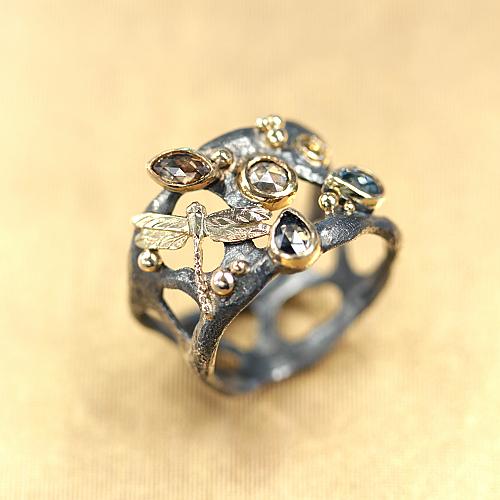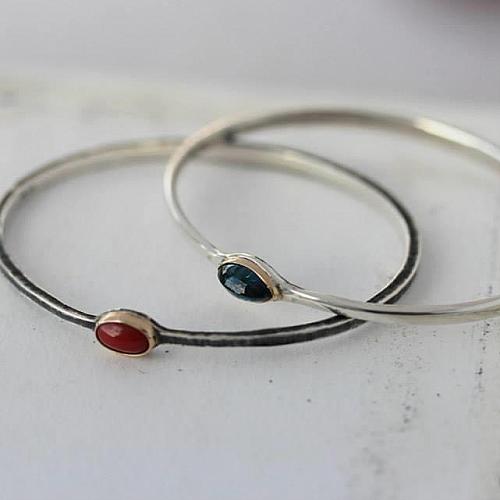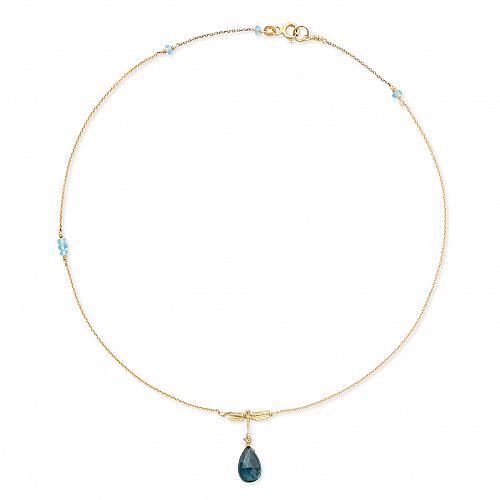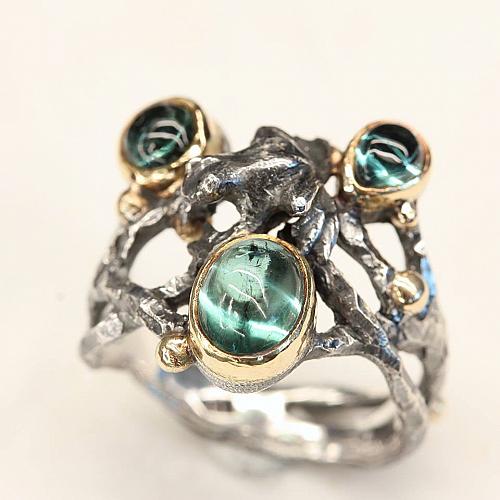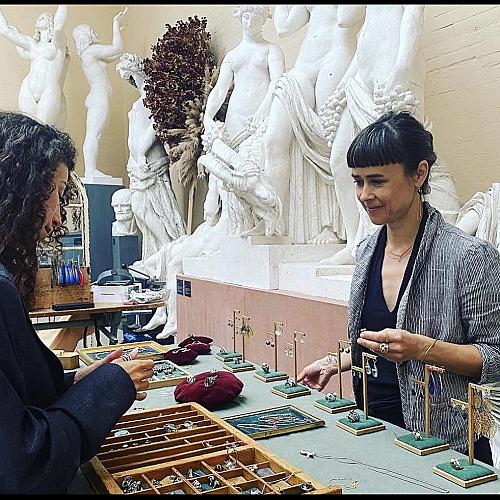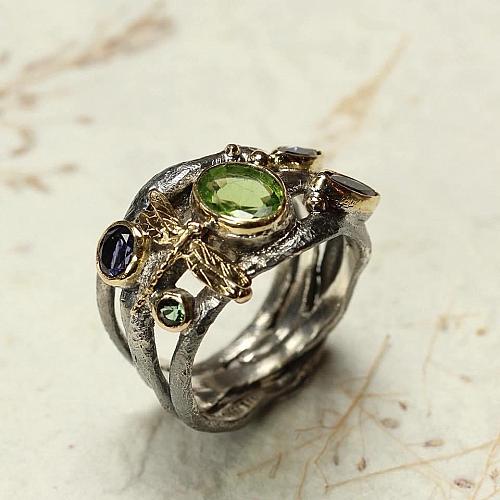The Hope Diamond
• Blog •
The Hope Diamond
Did you know that the world-famous Hope Diamond is viewed by more than six million visitors annually, making it the most sought-out object in the entire Smithsonian Institution and perhaps in any museum in the world. Ironically, only a small percentage of those visitors know anything about the Hope Diamond or why it is famous. Many expect to see the world's largest diamond, which, at 45,52 carats, the Hope certainly is not. Most people are surprised to see that it is a colored stone and does not even look like a diamond. So why is the Hope Diamond so famous?
First, it is the largest known deep blue diamond; only about one in one hundred thousand diamonds is sufficiently colored to be called a fancy colored diamond, and of these blue is one of the rarest and most desirable hues. Deep blue diamonds larger than a few carats are exceedingly rare. Therefore, the Hope Diamond is special because it is a unique natural object. But undoubtedly the major reason why the Hope Diamond is one of the world's most famous gems is its more than three-century history of mystery and intrigue, one that includes kings, a revolution, a daring theft, and perhaps even a curse.
The period of time since the Hope Diamond's discovery by humans in India, however, is just the most recent chapter in an epic adventure that started more than a billion years ago. Based on studies of many diamonds and of the diamond deposits in India, it is possible to formulate a likely early history of the gem we now know as the Hope Diamond. Most diamonds that have been dated by scientists are between one and three billion years old. (The Hope Diamond doesn't not contain the inclusions of other mineral crystals that are necessary for age measurements, and even if it did, the destructive nature of the measurement would preclude such a study.) Studies show that diamonds form more than 150 km below the Earth's surface, in the upper mantle, where temperatures reach 1,220 Celsius . Intense pressure from the weight of the overlying rock compresses carbon atoms into the compact arrangement of diamond. In the case of the Hope Diamond, a small number of boron atoms substituted for some of the carbon atoms (approximately one per million), giving rise to the blue color.
After being underground for millions, or even billions, of years, the diamond was carried to the Earth's surface by a volcanic eruption in just a few hours. During this wild ride the diamond was in great jeopardy. It could have shattered during the upward journey or the explosive surface eruption. Or, if the trip to the surface had been too slow, the diamond might have altered to graphite, the soft ingredient in pencils and the more stable form of carbon at the low temperatures and pressures near the Earth's surface. As the magma carrying the diamond approached the surface at speeds of up to 70km per hour, gases in the magma bubbled out. The magma turned to foam and erupted explosively, as when a warm bottle of soda is opened. At the surface the magma hardened into a type of rock called kimberlite, within which was entombed the Hope Diamond. Age measurements on rocks from the diamond deposits in India where the Hope Diamond was found indicate that the diamond probably arrived at the Earth's surface about a billion years ago. Water and wind gradually eroded the kimberlite, freeing the diamond, which was incorporated into the resulting gravel deposits.
It is not known exactly when and where the Hope Diamond was discovered, but it happened prior to 1668, most likely in the Golconda area of India. This region was the only major source of colored diamonds. In 1668, Jean-Baptiste Tavernier, a French gem merchant, sold a 112.875 carat blue diamond from India to King Louis XIV of France. The diamond was cut in the Indian style, which emphasized size rather than brilliance and probably only the natural crystal faces were polished. The king had the stone recut to a heart shape in 1673, improving its brilliance and reducing it to 67.125 ct. In 1749 Louis XV had the diamond, now known as the of French Blue, set into a piece of ceremonial jewelry for the Order of the Golden Fleece; the piece also featured a large white diamond and a red spinel and was worn only by the king. During the reign of King Louis XVI and Queen Marie-Antoinette the French Revolution erupted, and sometime between September 11 and September 17, 1792, the royal treasury was looted and the Crown Jewels, including the French Blue, disappeared.
The whereabouts of the stolen blue diamond for the next twenty years remains a mystery. Finally, in 1812, a memorandum by John Francillon, a London jeweler, dated precisely twenty years and two days after the French Crown Jewels had been reported missing, documented the presence of a 44.25ct blue diamond in England in the possession of London diamond merchant Daniel Eliason. This diamond was undoubtedly cut from the French Blue, a contention supported by the fact that according to French law, the statute of limitations for any crimes committed during wartime was twenty years, of which Francillon and his client were surely aware. The Francillon memorandum established the person in possession of the diamond as its new legal owner.
For the next several years it is not known what happened to the diamond, but there is some evidences to suggest that around 1820 it was bought by King George IV. The gem historian John Mawe states in his book A Treasure on Diamonds and Precious Stones (1823) that, “A superlatively fine blue diamond weighing 44 ct., and valued at 30.000 pounds, formerly the property of our Mr. Eliason, an eminent diamond merchant, is now said to be in the possession of our most gracious sovereign.” Some time after George IV’s death in 1830, the diamond was purchased by a London banker and gem collector, Henry Philip Hope, whose name it bears today. After Hope’s death in 1838, the diamond was left to his nephew Henry Thomas HOpe, whno then left it to his grandson Lord Francis Hope. In 1901, Lord Hope sold it to Adolph Weil, a London dealer, to pay off his debts. It was quickly sold to Joseph Frankels & Sons of New York and then to Selim Habib, who put it up for auction in Paris in 1909. It did not sell at auction, but was sold soon after to C. H. Rosenau and then to Pierre Cartier in the same year.
Evalyn Walsh McLean first saw the Hope Diamond while visiting Paris in 1910. Here father had struck it rich mining gold in Colorado, which allowed her to indulge her taste for extravagant jewels. Nevertheless, the mounting of the gem did not appeal to her and she returned to her home in Washington, D.C., without it. Pierre Cartier, however, was not one to give up easily; a few months later, diamond in hand, in a new setting , he arrived at McLean's home and left it with her for the weekend. His sales strategy was apparently successful, and over the next several months the deal was negotiated to purchase the diamond for 180.000 USD. Cartier told Mrs. McLean that the diamond brought bad luck to anyone who wore it, but this was likely no more than a sales pitch, since she had told him that she felt objects that were bad luck for others were good luck for her. It seems that subsequent stories about the Hope Diamond being cursed or causing ill fortune stem from Cartier’s attempts to interest Mrs. McLean in the diamond. If he did not completely fabricate these stories, he certainly embellished them.
Mrs. McLean added greatly to the legend of the Hope Diamond. She wore it everywhere and loved to tell stories about it. She entertained frequently, and many people had the opportunity to try on or hold the diamond. According to one account it was even modeled by her Great Dane, Mike. She pawned the diamond several times when she needed ready cash and offered it to help pay the ransom when the nation was in the grip of the drama of the kidnapping of Charles and Anne Morrow Lindbergh's baby boy in 1932. Two years after her death in 1947, her entire collection of jewelry, including the Hope Diamond, was purchased by the prominent New York jeweler Harry Winston. For the next nine years the diamond traveled the country as part of Winston’s fabulous”Court of Jewels” exhibit. In 1958, the diamond was removed from its setting and the culet (bottom) facet was slightly recut.
On November 10, 1958, the Hope Diamond was presented by Mr. winston to the Smithsonian Institute as the foundation of a great National Gem Collection. It arrived in a plain brown package by registered mail - insured for one million dollars. With only a few brief exceptions the diamond has remained on continuous exhibition at the National Museum of Natural History.
